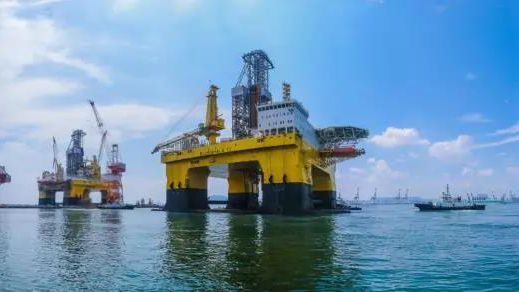Its first target will likely be offshore deposits of “flammable ice,” or natural gas hydrates, located in the South China Sea. Gas hydrates are a massive untapped energy resource: The USGS estimates that the crystalline solid makes up a larger fraction of the world’s hydrocabon reserves than all other fossil fuels combined. However, the difficulty of extracting the substance from deep subsea reservoirs has so far prevented commercialization. Among other challenges, extracting the gas from one subsurface hydrate formation could cause the collapse of adjacent hydrate areas, leading to a large uncontrolled release of methane – a much more potent greenhouse gas than CO2.
China aims to solve these obstacles to commercialization. In May, Chinese researchers aboard the Blue Whale 1 announced a successful trial well at a drill site in the contested South China Sea. According to Chinese state media, the well produced an average of 16,000 cubic meters a day of high quality gas.
Japan, the U.S. and India also have strong interests in methane hydrate recovery. Last year, researchers from the three nations joined forces to explore for hydrate deposits in the Bay of Bengal, and they discovered what may be “several of the largest and most concentrated gas hydrate accumulations yet found in the world,” according to USGS senior scientist Tim Collett. These highly enriched deposits are located in coarse-grained, sand-rich structures, the kind of reservoirs that are most easily exploited with existing technology.
Credit: MarEx 2017-11-06


















